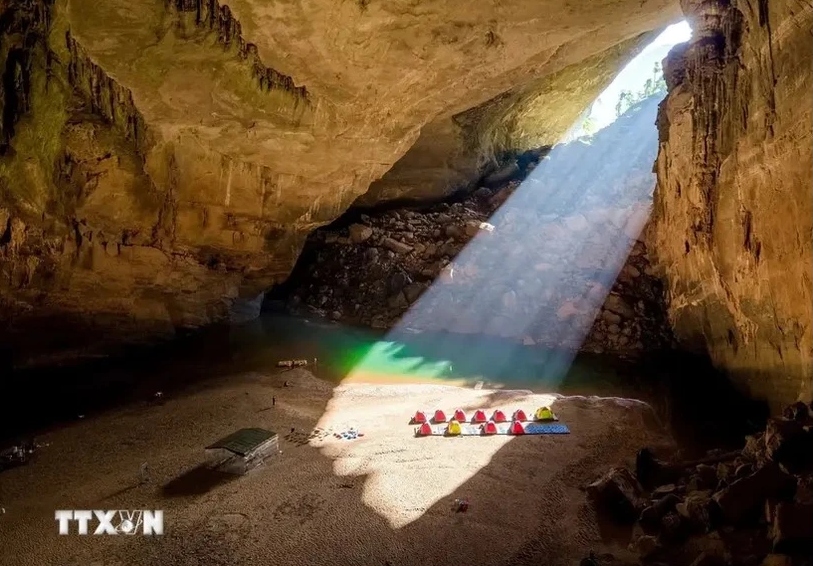Environmental protection crucial in cave tourism activities: Experts
Travel – Foods - Ngày đăng : 20:01, 11/09/2024

Vietnam owns a valuable system of natural caves, with Son Doong in the central province of Quang Binh considered to be the largest cave in the world, and En cave known as the third biggest cave with white sand and a river inside.
Many cave systems in Vietnam are not only majestic natural wonders, but also contain historical and cultural values because they were once inhabited by prehistoric people or are related to local folk tales and legends.
Nguyen Hoang Mai from the Institute for Tourism Development Research said that in Vietnam, cave tourism is closely linked to the orientation of sustainable tourism development with the balance in the three pillars of economy - culture and society - environment.
Mai underlined that cave tourism is relating to many other types of tourism such as nature-based tourism, eco-tourism, community, cultural-historical, spiritual, archaeological, adventurous, and geological tourism.
Doan The Anh, Vice Director of the Vietnam Centre on Karst and Geoheritage under the Vietnam Institute of Geosciences and Mineral Resources, cited surveys by many foreign expert delegations over the past 30 years showing that caves in Vietnam are mainly formed from limestones and from volcanic activity.
However, Nguyen Anh Duc from Oxalis Adventure held that although Vietnam own many valuable cave systems, the country has yet to show a balance between tourism development and natural conservation. Particularly, environmental pollution and waste problems have prevented cave tourism from developing to its full potential, he stated.
According to the Institute for Tourism Development Research, cave tourism is a sensitive type of tourism that can easily pose negative impacts on resource values, especially natural tourism resources.
Experts held that it is crucial to preserve nature, biodiversity and cave environment, ensuring the benefits and sustainable development of local communities, conserving and promoting cultural and historical values associated with caves, protecting safety during management and operation, and ensuring safety for visitors in tourism activities.
In order to make full use of cave values and promote tourism, localities and tourism service providers should focus on training people engaging in tourism service provision on issues relating to cave safety, while guiding visitors on natural protection, raising public awareness of cave environment protection, they said.
Compliance with the guidelines will help protect and promote the value of the caves, while bringing long-term economic benefits to the local communities, they stressed.
